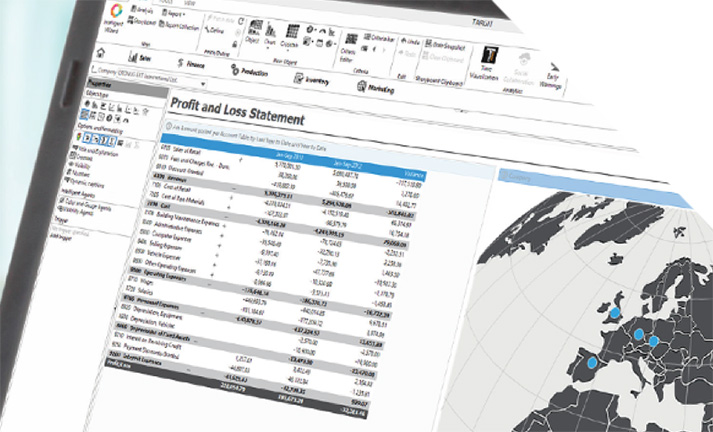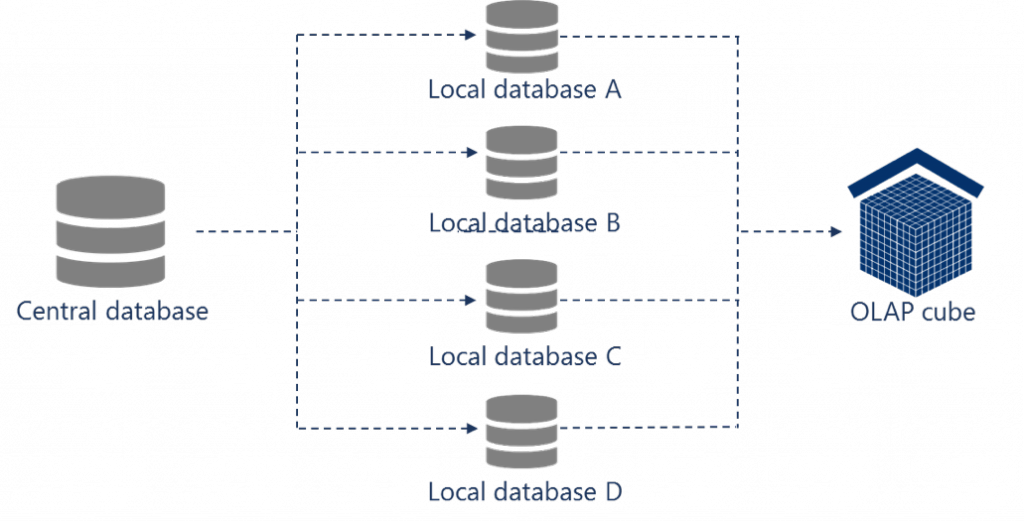
04 Apr Financial consolidation and standardized reporting in Dynamics NAV used globally
Among the multiple benefits of global financial consolidation or ERP system standardization, standardized reporting is a noteworthy feature. It enables facilitated management, control and comparisons of data from subsidiaries. It is meant not only in financial reporting, but also in other reporting areas such as sales.
Targit – a Business Intelligence tool, designed for viewing data from different sources. Well-recognized among global companies using Microsoft Dynamics NAV as an ERP system.
Comparative analysis – an overview of results from multiple subsidiaries
Each subsidiary of an international company has a planned budget that is to be met and customers, customer groups, sales channels or regions which it covers. Thus, reporting in a multi-company group means a prerequisite of reporting per various categories. For example, an overview of item data per specified subsidiaries. Intercompany data transparency is crucial as it ensures accurate reporting not only for P&L account, but also for supply chain management, item rotation (slow-moving stock), output quality and production line load. Viewing all production plants for machine load data is a good example. The insight into this data may lead to a decision to move production from one country to the other in order to reduce costs and production resources overload. What is meant here by reporting, is an overview of data based on groups, periods etc. Reports viewing sales data from multiple subsidiaries in one table are also possible. Such reporting provides valuable data for comparative analyses.

The standardization of ERP systems used in subsidiaries ensures the identical layout of reports delivered to the headquarters.
Analyzing subsidiary data
The access to local systems which operate in the same version with identical setup and standardized data enables the user to easily track and trace the data to a linked company, if a source of data needs to be validated. Navigating within the same environment (notwithstanding the local system used for logging) makes monitoring much easier for controllers from the headquarters. The topic was discussed by my colleague in: How to standardize accounting processes and streamline month-end closing in a global company? Ultimately, the headquarters retrieve all required data from local systems. Therefore , it is not necessary for the subsidiaries to create their reports for consolidated reporting purposes.
Master data standardization
What makes standardized reporting possible, is the identical data structure. Additionally, a consolidated ERP system provides uniform dictionary data and dimension values for all subsidiaries. By using Master Data Management System, synchronization and data consistency in various subsidiaries are ensured. Process standardization is of a vital importance in this respect. If subsidiaries operate in an identical way, it is easier and more reasonable to compare them than in a situation when process discrepancies generate inconsistent results.
Reporting database in a consolidated global ERP system ERP
Beside a central database and multiple local databases (OLTP), the architecture of a standardized ERP system includes the OLAP reporting database. It is known that ERP systems such as Microsoft Dynamics NAV, might show some reporting inefficiencies. Therefore, they use OLTP databases, that, as the full name Online Transaction Processing indicates, are designed to register daily transactions. Comprehensive reporting requires multi-dimensional data processing, sorting and aggregating. For such complicated queries, OLAP databases are more efficient. Client applications such as Targit or MS Excel enable data presentation that is processed in an OLAP database.

Microsoft Dynamics NAV – ERP with the OLTP database (used by subsidiaries of an international company) and OLAP reporting database designed for Business Intelligence solutions.
Global / group balance sheet
As soon as all accounting setup (e.g. chart of accounts, posting groups) has been standardized,generating consolidated financial reports by company headquarters becomes a simple task. Generally, a BI tool such as Targit is used for this purpose, however it is also possible to combine all output data within Excel sheets.





